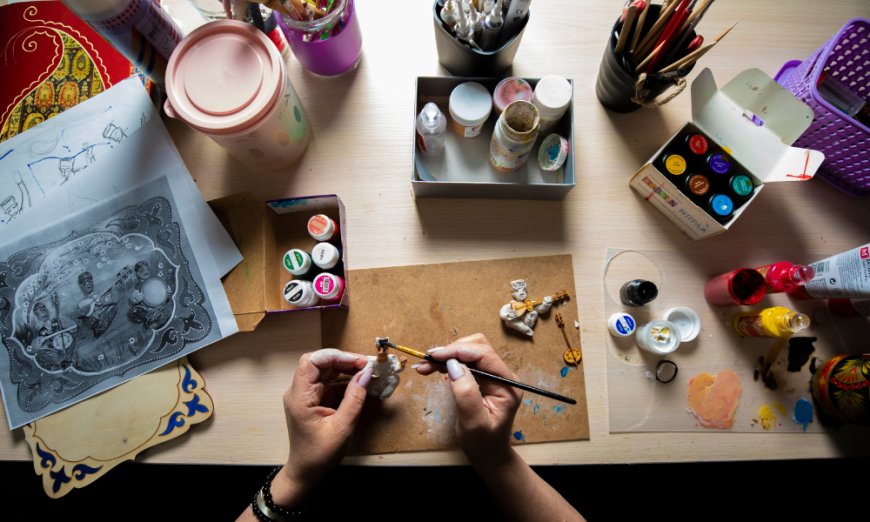Reimagining Cultural Narratives Through Art
Explore the powerful role of Chicano art in reshaping cultural narratives, celebrating identity, and advocating for social justice. Discover its historical roots, political impact, and global influence.

Art has always been a powerful tool for storytelling. Whether through paintings, murals, sculptures, or other forms, artists have the ability to reshape and reinterpret the stories of our cultures. This process of reimagining cultural narratives is a profound way to engage with the past, challenge the present, and build a future that is more inclusive and reflective of diverse experiences. In particular, Chicano art has played a significant role in this journey, offering a unique perspective on identity, heritage, and social justice.
Introduction: Art as a Mirror of Culture
More than only an aesthetic endeavour, art is a reflection of our society and a way to communicate ideas, feelings, and experiences that influence it. Many under-represented groups use art as a means of preserving cultural heritage, challenging prevailing narratives, and reclaiming their history. The Chicano community uses art, especially Chicano art, as a potent tool to proclaim its identity and reinterpret its past. It challenges us to reconsider the representation of culture, the narratives that are told, and the insights that might be gained from them regarding our shared future.
What is Chicano Art?
Chicano art is the creative expression of Mexican-Americans, particularly those living in the United States. The term "Chicano" itself signifies a distinct cultural identity that bridges the gap between Mexican heritage and American experiences. Chicano art encompasses a wide range of visual art forms, including murals, paintings, prints, photography, and sculptures. It is characterized by its vivid colors, cultural symbolism, and a deep connection to social and political issues.
The Historical Roots of Chicano Art
Amidst societal turmoil in the 1960s and 1970s, Chicano art began to take shape. This art genre emerged against the backdrop of the Chicano Civil Rights Movement, which aimed to protect Mexican-American communities. In their artwork, artists such as Judy Baca and Carlos Almaraz addressed issues of racial inequity, immigration, and identity. Their art was more than just ornamental; it served as a vehicle for narrating their people's tales, defending their rights, and requesting recognition in a society that had frequently ignored them.
Reimagining Identity Through Chicano Art
Through Chicano art, artists can rethink and explore who they are. They are able to convey the intricacies of being Mexican-American using striking imagery, juggling pride in their Mexican ancestry with the difficulties of living in the United States. Chicano artists frequently portray their community and themselves as strong, proud, and rooted in their heritage.
In this sense, Chicano art serves as a means of self-definition and provides a counterpoint to stereotypes and the stereotyped portrayals of Latinx people in the media.
Chicano Art as a Medium for Political Expression
Political action is at the heart of Chicano art. In this approach, topics like labour rights, police brutality, land rights, and immigrant conflicts are addressed. The art of the era, for example, frequently featured Cesar Chavez and the United Farm Workers organisation. Posters and murals evolved became instruments of protest and unity. Not only did these pieces address the Chicano community, but they also aimed to inform and inspire the general public to support civil rights.
The Role of Murals in Chicano Art
Murals have gained notoriety in the Chicano art community. Particularly in places like Los Angeles, large-scale public murals have evolved into a platform for sharing the experiences of Chicano people's daily lives, difficulties, and victories. Themes of community, resistance, and cultural pride are frequently shown in these paintings. The spirit of the Chicano movement is preserved for future generations by their dual roles as historical documentation and public art.
Chicano Art and the Fight for Social Justice
Emphasising social justice is one of the most important ways Chicano art has reinterpreted cultural narratives. Chicano artists have brought attention to struggles for civil rights, economic inequity, and prejudice via their art. In many respects, their work demands action rather than merely narrating a tale. The voices of people who have frequently been silenced have been magnified by Chicano art, which has commandeered public areas with strong visual expressions.
Chicano Artists Who Changed the Cultural Narrative
A number of artists have been instrumental in influencing Chicano art and its cultural significance. Even though he is not a Chicano artist by today's definitions, Diego Rivera is frequently called upon as an influence because of his murals that portray Mexican history and the sufferings of the working class. With pieces that address both their heritage and current challenges, more recent artists like Tomás K. Moniz, Vik Muniz, and Emory Douglas have persisted in pushing limits. By redefining Chicano identity, these artists have transformed art into a tool for cultural reimagining.
The Power of Color and Symbolism in Chicano Art
Often utilised to represent many facets of Mexican-American life, colour is a potent element in Chicano art. Strong, vibrant colours like red, green, and yellow can stand for hope, strength, and energy. Additionally, symbols like the Aztec sun, eagle, and skulls are employed to evoke spirituality, cultural past, and fortitude. Beyond the painting, these visual components provide a narrative that evokes strong feelings of cultural pride in the viewer.
Chicano Art and Its Global Impact
Despite having its origins in the United States, Chicano art has influenced people all around the world. The themes of social justice, cultural pride, and resistance that are essential to Chicano art have impacted artists from around the world, particularly in Latin America. Through partnerships, digital platforms, and exhibitions, Chicano art has become part of global discussions about power, race, and identity.
The Evolution of Chicano Art in Contemporary Society
Even now, Chicano art is still evolving. The advent of social media and internet platforms has given modern Chicano artists the opportunity to explore new artistic mediums and reach a larger audience. An intriguing new arena for reinventing cultural narratives is created by the combination of digital media and traditional creative forms. Chicano artists today are pushing the limits of style, genre, and context, contradicting conventional ideas about what art should be.
Challenges Faced by Chicano Artists
Chicano art still confronts several obstacles in spite of its increasing popularity. Limited funds, a lack of institutional backing, and the ongoing struggle to get their work recognised in the mainstream art world are all common problems for artists. Additionally, a lot of Chicano artists continue to struggle with prejudices or incorrect interpretations of their work.
How Chicano Art Contributes to Cultural Preservation
The preservation of the Chicano community's history and culture depends heavily on Chicano art. These artists make sure that the hardships and triumphs of their forebears are never forgotten by using visual storytelling. By capturing the lived experiences of a community and transferring that information to future generations, Chicano artists' murals, paintings, and sculptures serve as visual archives.
The Future of Chicano Art: Looking Ahead
The future of Chicano art appears bright as long as these artists continue to influence cultural narratives. With a new generation of artists exploring diverse media and expanding the boundaries of artistic expression, Chicano art will continue to be a significant force in shaping cultural dialogues for years to come.
Conclusion: The Enduring Power of Cultural Narratives in Art
Art has long been a potent medium for rewriting cultural histories. Through Chicano art, we may observe how artistic expression can celebrate cultural identities, confront historical injustices, and ignite social change. In the future, Chicano art will undoubtedly play a significant role in the ongoing discussion about heritage, identity, and the narrative power of art.
FAQs
1. What is Chicano art?
The artistic expression of Mexican-Americans, known as Chicano art, frequently centres on issues of social justice, identity, and cultural pride.
2. How has Chicano art evolved over time?
Chicano art has continued to represent concerns of culture, politics, and community, moving from the murals of the 1960s to more modern mediums like digital media.
3. What is the significance of murals in Chicano art?
Chicano art relies heavily on murals, which are expansive public displays of political action, cultural pride, and historical narrative.
4. Who are some famous Chicano artists?
The movement has benefited greatly from the contributions of notable Chicano artists including Carlos Almaraz, Judy Baca, Tomás K. Moniz, and Emory Douglas.
5. Why is Chicano art important today?
Minority perspectives are still given a platform by Chicano art, which reimagines traditional tales and challenges social themes of justice, racism, and identity.
What's Your Reaction?


























